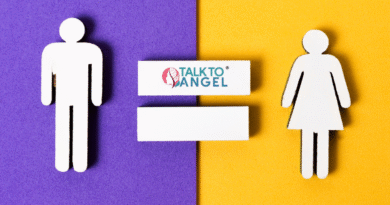Gender Identity Matters: A Guide to Self-Discovery
In contrast to biological traits, sexual orientation, or the sex assigned at birth, gender identity is a deeply held internal sense of one’s gender. This blog explores the routes of self‑discovery—biological, cognitive, and social—that shape gender identity, highlights psychological theories and lived experiences, and emphasizes the importance of supportive environments. By recognizing gender as a spectrum and affirming diverse identities, society fosters healthier individual development and greater social inclusion.
In the contemporary discourse on identity, gender identity has emerged as a fundamental aspect of self-understanding and social navigation. Defined by the American Psychological Association as an “internal sense of being male, female, or another gender,” this identity may or may not align with the gender assigned at birth. The journey of discovering and affirming one’s gender is both deeply personal and socially influenced, often extending beyond simple binaries into a spectrum of identities.
Biological, Psychological, and Social Foundations
Gender identity is the result of a complex interplay between biological, psychological, and social factors. Differences in brain structure and hormone exposure during pregnancy may biologically influence innate gender feelings.. Psychologically, cognitive development theories—like Kohlberg’s stages—describe how children progress from basic gender labeling to nuanced gender constancy between ages two to seven. Socially, children learn gender roles through parenting modeling, peer interaction, and cultural norms, as described by gender-schema and social learning theories. Together, these influences form the foundation of identity.
Theories of Gender Identity Formation
Three major theories help explain gender identity development:
- Cognitive-Developmental Theory:
- Early labeling: identifying as boy or girl.
- The knowledge that gender remains constant despite changes in appearance is known as gender constancy.
- Self-socialization: adopting behaviors that match internal gender understanding.
- Early labeling: identifying as boy or girl.
- Gender Schema Theory
- People develop schemas—mental categories—for gender that shape how new information is processed.
- People develop schemas—mental categories—for gender that shape how new information is processed.
- Ecological and Social Identity Models:
- Identity is shaped by multiple contexts—family, school, culture.
- Identity is shaped by multiple contexts—family, school, culture.
These frameworks demonstrate that identity changes over time through reflection, social feedback, and both internal and external pressures.
The Personal Journey: Narratives & Processes
For transgender and gender-diverse individuals, the journey often includes self-awareness, exploration, affirmation, and integration into a coherent identity. A grounded-theory study of transgender adults found that:
- Seeing other trans narratives provided hope.
- Reconciling authenticity with practical considerations—resources, safety—was pivotal.
Research on youth up to age 18 shows that affirming environments—using chosen names, pronouns, and social recognition—bolster well-being, while misgendering or rejection harms mental health. One youth reflected:
“I like the gender‑pointed questions… not just as a result of this… talk about my experience as a person…” These insights stress that affirmation is not merely a social courtesy—it’s central to identity formation.
Identity in Context: Culture, Intersectionality, and Diversity
Understanding gender identity also requires attention to cultural variations and intersectionality. Gender constructs differ across societies—consider “māhū” in Hawai‘i and “hijra” in India, neither fitting Western binary norms. These identities illustrate how cultures shape gender categories and lived experiences.
Judith Butler argues that gender identity is performative, upheld through repeated acts and social norms. Thus, identity is not fixed—it evolves through narrative, social interaction, and lived expression.
The Role of Affirmation and Support
Affirmative care and supportive environments safeguard mental health. The WPATH Standards of Care v8 stress that gender diversity is a normal developmental variation—not a disorder—and that affirming a child’s identity helps prevent long-term harm. Studies show that acceptance by family and peers improves psychological adjustment, while rejection increases stress and risk.
Practical Implications for Individuals and Communities
- Families and caregivers: Use chosen names and pronouns, seek education, and maintain affirming environments.
- Schools and educators: Implement inclusive policies, LGBTQ curricula, and peer support groups.
- Mental health professionals: Provide exploratory, affirming, and trauma–informed therapy.
- Community and policy: Recognize gender diversity through anti-discrimination laws, access to gender-affirming care, and inclusive representation in media.
In India, platforms like TalktoAngel and leading clinics such as the Psychowellness Center, recognized as one of the best mental health wellness clinics in Delhi, offer accessible and confidential therapy for gender identity and LGBTQ+ concerns. As India’s largest digital mental health service, TalktoAngel connects individuals with licensed psychologists, counsellors, and psychiatrists through secure video, chat, or audio sessions in 18 Indian languages, ensuring personalized, culturally sensitive care. Both TalktoAngel and Psychowellness Center offer LGBTQ+ affirming therapy, specializing in gender dysphoria, identity exploration, and emotional healing. Their best therapists in India use evidence-based approaches like emotional processing, cognitive restructuring, and psycho-social strategies tailored to the unique needs of transgender and gender-diverse individuals. This specialized support is vital, as affirmation and understanding significantly improve mental health during identity development.
Services start at approximately ₹400–₹500 per session, making them more affordable than many in-person options, and all communications are encrypted to protect confidentiality. While not intended for emergencies or crisis intervention, the platform offers ongoing support, especially valuable during the critical phases of self-discovery and social transition.
By integrating professional, affirming care into the personal journey of gender identity, TalktoAngel exemplifies how modern online counselling can empower individuals to navigate complexity with knowledge, empathy, and resilience.
Conclusion
Understanding and accepting one’s gender identity is a profoundly transformative process that has roots in biology, cognition, culture, and social interaction. When individuals are affirmed, seen, and supported, they are more likely to develop a harmonious, resilient sense of self. Recognizing gender as a spectrum not only honors each person’s journey but fosters a more compassionate, inclusive society.
References
- Glynn, T., Gamarel, K., Kahler, C. W., Iwamoto, M., Operario, D., & Nemoto, T. (2016, April 28). The role of gender affirmation in psychological well‑being among transgender women. Psychology of Sexual Orientation and Gender Diversity, 3(3), 336–344. https://doi.org/10.1037/sgd0000171 Verywell Health+2PMC+2PubMed+2
- Olson, K. R., et al. (2020). Gender affirmation is associated with transgender and gender nonbinary youth’s mental health improvement. Journal of Adolescent Health. https://pubmed.ncbi.nlm.nih.gov/32456545/ PubMed
- World Professional Association for Transgender Health. (2022). Standards of Care for the Health of Transgender and Gender Diverse People (Version 8). Retrieved from https://wpath.org/publications/soc8/ Reddit+15wpath.org+15PMC+15
- Transgender identity: Development, management and affirmation. (2022). Current Opinion in Psychology, 48, 101467. https://doi.org/10.1016/j.copsyc.2022.101467 journals.sagepub.com+2sciencedirect.com+2PubMed+2
- “What Is Gender‑Affirming Care?” (2022, April 18). Verywell Health. Retrieved from https://www.verywellhealth.com/what-is-gender-affirming-care-7506151 nypost.com+2Verywell Health+2TransHealthCare+2
- Becoming themselves: How two CT teens say early gender care helped them find joy and confidence (2025, July 13). CT Insider. Retrieved from https://www.ctinsider.com/connecticut/article/gender-affirming-care-trans-teens-youths-20383518.php




